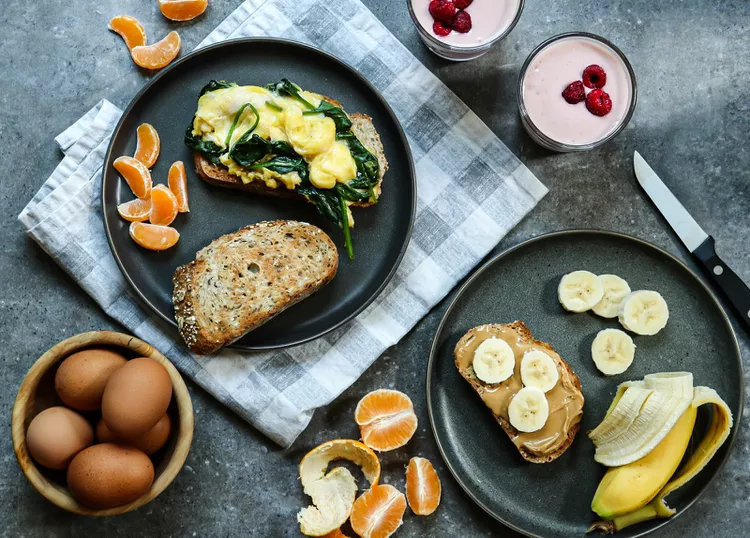Chronic inflammation is now recognized as a key factor in many health conditions, including diabetes, heart disease, and arthritis. While genetics certainly plays a role, lifestyle factors—such as diet, sleep quality, stress levels, and physical activity—can influence inflammation significantly. Adopting an anti-inflammatory diet is one powerful way to help combat chronic inflammation and improve your overall health. If you’re not sure where to start, this 30-day anti-inflammatory meal plan is a great place to begin.
Why Focus on an Anti-Inflammatory Diet?
The anti-inflammatory diet has gained popularity for its potential to help manage and reduce inflammation in the body. This type of eating plan emphasizes foods that are rich in antioxidants and healthy fats while minimizing processed foods and refined sugars—two contributors to inflammation. Research supports the idea that a diet rich in fruits, vegetables, nuts, seeds, and fatty fish like salmon can help reduce inflammation markers in the body.
Key foods to focus on include:
- Fruits and vegetables: Particularly those rich in antioxidants like berries, spinach, and kale.
- Healthy fats: Found in sources like olive oil, avocados, and fatty fish, these fats support heart health and fight inflammation.
- Whole grains: Brown rice, quinoa, and oats are excellent sources of fiber, which can also help regulate blood sugar levels and reduce inflammatory responses.
This 30-day meal plan has been crafted to offer a variety of delicious and simple recipes that not only combat inflammation but also contribute to better overall health. Whether you’re aiming to reduce chronic inflammation, lose weight, or simply eat more healthfully, this plan can be easily customized to meet your needs.
A Flexible Plan for Different Calorie Needs
The beauty of this meal plan lies in its flexibility. The base plan is designed around a 1,500-calorie per day intake, which is a common level for weight loss. For most people, this calorie level results in a weight loss of about 1 to 2 pounds per week. However, we understand that each person’s nutritional needs are different. If 1,500 calories leave you feeling hungry, consider adjusting the plan to a 2,000-calorie modification. Those who are aiming to gain weight can further modify the meal plan by increasing their intake of healthy foods, such as adding more nuts, seeds, and healthy fats.
This meal plan is designed with long-term sustainability in mind, so the focus is on nutrient-dense, anti-inflammatory foods that are satisfying, flavorful, and easy to prepare. The goal is to create lasting habits that improve your health while also offering enjoyment in every meal.
The Structure of the 30-Day Plan
The 30-day meal plan is broken down into weeks, with each week introducing new recipes and flavor profiles to keep things interesting. Here’s an overview of what you can expect each week:
- Week 1: Laying the Foundation
The first week focuses on introducing your body to anti-inflammatory foods, with plenty of fruits, vegetables, and whole grains. Breakfasts might include chia pudding with berries, and dinners could feature a light yet satisfying salad with grilled salmon. This week is about getting into the groove of the diet, incorporating simple meals that are both easy to make and nutritious. - Week 2: Variety and Flavor
Week two builds on the momentum, introducing more variety into your meals. You’ll enjoy heart-healthy foods like avocados, nuts, and fatty fish, along with a variety of leafy greens and antioxidant-rich fruits. A Mediterranean-inspired dinner might include grilled chicken with olive tapenade, and breakfasts could feature smoothies packed with spinach, berries, and almond butter. - Week 3: Boosting Fiber and Nutrients
Week three places emphasis on high-fiber foods like quinoa, sweet potatoes, and legumes, which help to regulate blood sugar and reduce inflammation. Meals like roasted vegetable bowls and hearty soups help fuel your body with the nutrients it needs to thrive. The fiber-rich foods also promote healthy digestion, ensuring that your body can process and eliminate waste effectively. - Week 4: The Finishing Touches
The final week of the plan reinforces everything you’ve learned and introduced throughout the month. Expect meals like roasted salmon with broccoli and a side of wild rice or a quinoa salad with mixed greens and olive oil dressing. By now, you’ll feel more comfortable cooking with anti-inflammatory ingredients and likely notice improved energy levels, better sleep, and less discomfort from inflammation.
Key Anti-Inflammatory Foods to Include
Throughout the month, focus on incorporating the following foods into your meals:
- Berries: Blueberries, strawberries, and raspberries are packed with antioxidants that help protect your body from oxidative stress, which can contribute to inflammation.
- Fatty Fish: Salmon, mackerel, and sardines are rich in omega-3 fatty acids, which have been shown to reduce inflammation and promote heart health.
- Leafy Greens: Kale, spinach, and Swiss chard are nutrient-dense and rich in vitamins, minerals, and antioxidants, which work together to combat inflammation.
- Nuts and Seeds: Walnuts, almonds, and flaxseeds are excellent sources of healthy fats and omega-3s, supporting healthy circulation and reducing inflammation.
- Olive Oil: A staple of the Mediterranean diet, olive oil is rich in monounsaturated fats and antioxidants, making it a powerful anti-inflammatory fat choice.
- Whole Grains: Brown rice, quinoa, and oats provide fiber, which helps regulate blood sugar and supports healthy digestion.
Sample Day of Meals
To give you a better idea of what a typical day on the anti-inflammatory meal plan looks like, here’s a sample day of meals:
- Breakfast:
- Chia pudding made with almond milk, topped with fresh berries and a sprinkle of walnuts.
- Green tea or black coffee.
- Lunch:
- Quinoa salad with roasted vegetables, mixed greens, and a lemon-olive oil dressing.
- A small serving of Greek yogurt with honey and a few almonds for a protein boost.
- Dinner:
- Grilled salmon with a side of roasted sweet potatoes and sautéed spinach.
- A small serving of wild rice.
- Snack:
- Carrot sticks with hummus or a handful of mixed nuts.
Final Thoughts: Stick with It
By the end of the 30 days, you’ll likely notice several positive changes. Reduced inflammation, improved energy levels, better digestion, and potentially even weight loss are all common benefits of adopting an anti-inflammatory diet. The key is consistency—continue to eat nutrient-dense, anti-inflammatory foods, and make sure to incorporate physical activity and stress management techniques to support long-term health. With this meal plan, you’re not just following a short-term diet; you’re creating habits that will benefit your body for years to come.
Incorporating these anti-inflammatory foods into your routine doesn’t just help reduce inflammation—it also nourishes your body, boosts overall well-being, and puts you on the path to a healthier future. So, take the first step today, and let the healing power of food work its magic.



